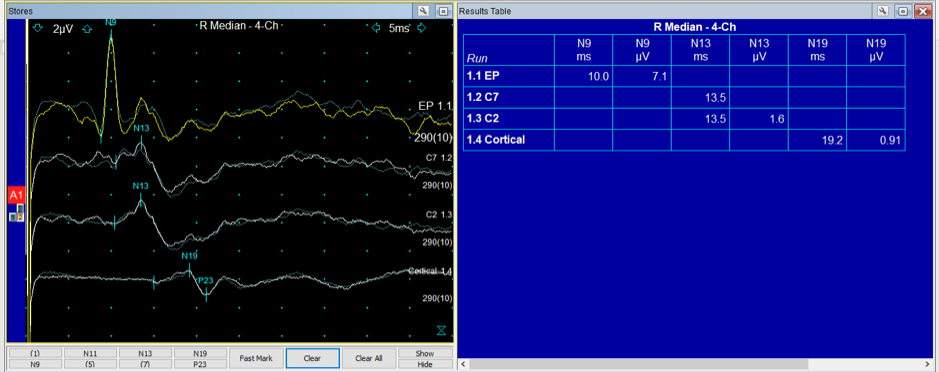What is an SSEP?
The Somatosensory Evoked Potential (SSEP) tests the function of nerve pathways in the spinal cord and cortex. An SSEP is generated by physiological stimuli such as touch or muscle stretch or an electrical stimuli. Electrical stimulation is the preferred form of stimulation for recording an SSEP because it is controlled and can be measured easily. A small safe electrical stimulus is applied to the skin over the peripheral nerve pathway, say at the wrist or the ankle, sufficient enough to reach the sensory nerve threshold. Responses or ‘potentials’ are recorded along the sensory nerve pathway and from the cortex. Prolongation of the cortical responses and sometimes the spinal potentials suggests demyelination. Patient’s with Multiple Sclerosis typically have abnormal SSEPs.
Here is an example of a SSEP recorded from the upper limb (median nerve) and the lower limb (tibial nerve).



